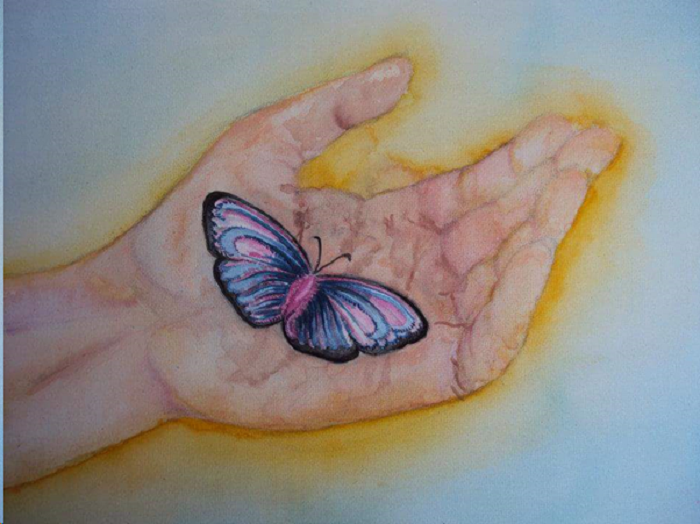
In this blog post, we discuss the various ways art therapy may be utilised for the purposes of treating people at an alcohol rehab centre. Many of these people suffer from drug and alcohol addiction. Specifically, we discuss the benefits of art therapy, the various styles and practices we’ve employed at Cassiobury Court in Watford over the last five years, and the overall goals of art therapy for the purposes of treating people who suffer from drug and alcohol addiction.
The benefits of art therapy
Art therapy allows our clients to express themselves in creative and novel ways. This is particularly useful for our clients who may otherwise struggle to communicate verbally in more traditional ‘group therapy’ sessions. Many of our clients have experienced traumatic events, and struggle to communicate their experiences with others due to these events. From a therapeutic standpoint, it’s essential for clients to analyse and reconstruct these experiences from fresh and empowering perspectives. Art therapy allows our clients to achieve this in a low pressured and non-intimidating manner.
Art therapy is thus a straightforward and non-invasive way of getting clients to relax, lower their guard and then become more receptive to more traditional forms of ‘talking therapies’. Art therapy is, therefore, an excellent ‘introductory’ therapy.
Once completed, clients’ artwork is discussed in individual and group therapy sessions. In this way, art therapy provides clients with a tangible starting point to begin the mental healing process. This means clients are not required to begin the process ‘cold’. Art therapy is thus a form of ‘complementary’ therapy and something that supports other forms of therapy such as cognitive behavioural therapy, psychotherapy and counselling. Holistically, all of these therapies have the chief aim of helping clients understand their inner-self on a deeper and more intimate level.
Art therapy is also an effective means of building trust between therapist and client.
We believe art therapy provides our clients with a means to improve self-esteem and self-worth. This is particularly useful for many people who suffer from drug and alcohol addiction tend to experience poor self-esteem and low self-worth.
At Cassiobury Court, art sessions take place in group settings. This allows our clients to bond and learn from each other’s experiences. Art therapy is, therefore, a highly social activity.
From a physical perspective, art therapy is known to reduce levels of anxiety and stress. This is because art therapy helps our clients to reduce levels of cortisol in the body.
Art therapy at Cassiobury Court
Art therapy at Cassiobury Court is intended to help clients deepen their mindfulness practice, and enhance their sense of well-being. Through this creative expression, clients learn to nurture themselves and tend to unmet emotional needs.
Sessions include different themes week by week, also using a mixture of art materials with mindfulness practice, mindful art making, interpersonal practice and group work. Clients don’t need prior experience of making art. The exercises may not be limited to specific sessions or sequences, and are flexibly designed to work with the emotional pace of the client.
Sessions are group based – weekly where clients can come together and explore different themes freely such as fear, coping with anger, anxiety, stress, cultural/religious diversity and its multi-layers, hopes and facing the future in a supportive and containing relationship with peers and facilitator.
Goals of art therapy at Cassiobury Court
Our overall goals of conducting art therapy at Cassiobury Court include:
- To facilitate a safe inclusive environment where clients from the can express and voice their inner world freely
- To offer an alternative and more creative approach to traditional counselling and talking therapy in order to further clients’ self-growth, self-awareness and empowerment
- Engaging with the arts to explore, acknowledge and work through any challenging emotions
- Respecting and embracing clients from all diverse backgrounds (different sociocultural, religious, sexual orientation, disabilities, ethnicity)
- To acknowledge, support and promote well-being and self-determination that takes account of differences in experiences, ways of communicating, values, kinship, families, ancestral history, and experiences on current life situations of women and their family of origin
- Working together to create a sense of belonging and hope for the future, based on a strengthened sense of self
- Promoting and prioritising the need for establishing and maintaining clients rights to emotional care, well-being/ and health as the foundation for their family, the wider community and for their own personal happiness
About the authors
This is a post by Paul Clarke and Raffat Bari at Cassiobury Court. Paul is an admissions advisor. Raffat is a professional Creative Art Interventionist based in Hertfordshire, United Kingdom. Raffat is also a member of the BAAT.
